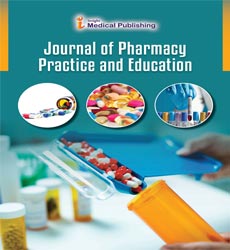Evaluation of Inpatient Opioid Prescribing Patterns and Adverse Events in General Medicine Patients with Chronic Non-Cancer Pain
Abstract
Background: Chronic non-cancer pain is complex to manage and opioid prescriptions have been increasing in the past years. The objective of this study was to describe opioid prescribing patterns for general medicine inpatients and to identify risk factors that may predispose patients to opioidrelated adverse events.
Methods and findings: This was a single center retrospective chart review at a tertiary academic medical center in Boston, Massachusetts from July 2016 to June 2017. Patients were included if at least 18 years of age, admitted to a general medicine unit, on opioids prior to admission, and had received one or more prespecified opioids during their admission. Patients with sickle cell disease, cancer-associated pain, use of peri-operative opioids, or opioid use disorder on methadone or buprenorphine/naloxone therapy were excluded. Of the 147 patients included in the analysis, 64.6% of patients had a change in the opioid regimen upon admission. There was a significant decrease in morphine milligram equivalents (MME) per day from PTA to inpatient (p<0.001) and a significant increase from inpatient to discharge (p<0.003). Change in MME per day was non-significant when comparing PTA regimens to discharge regimens (p=0.53). Ethnicity, age>65, gender, past medical history of substance use and psychiatric disorders, and institution primary care physician were not predictive of prescribing patterns. Upon evaluation of predisposing risk factors there was no difference in naloxone prescribing.
Conclusion: Results suggest that although opioid prescribing may change during admission, long-term management of the opioid regimen is generally deferred to the outpatient provider. The data also identifies a potential area for improvement with respect to naloxone prescribing.
Open Access Journals
- Aquaculture & Veterinary Science
- Chemistry & Chemical Sciences
- Clinical Sciences
- Engineering
- General Science
- Genetics & Molecular Biology
- Health Care & Nursing
- Immunology & Microbiology
- Materials Science
- Mathematics & Physics
- Medical Sciences
- Neurology & Psychiatry
- Oncology & Cancer Science
- Pharmaceutical Sciences
